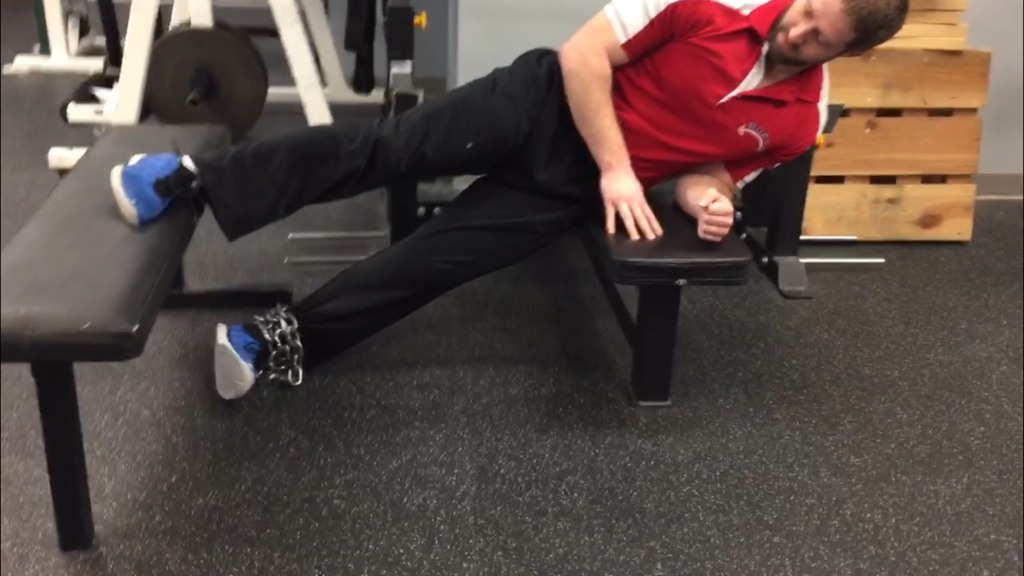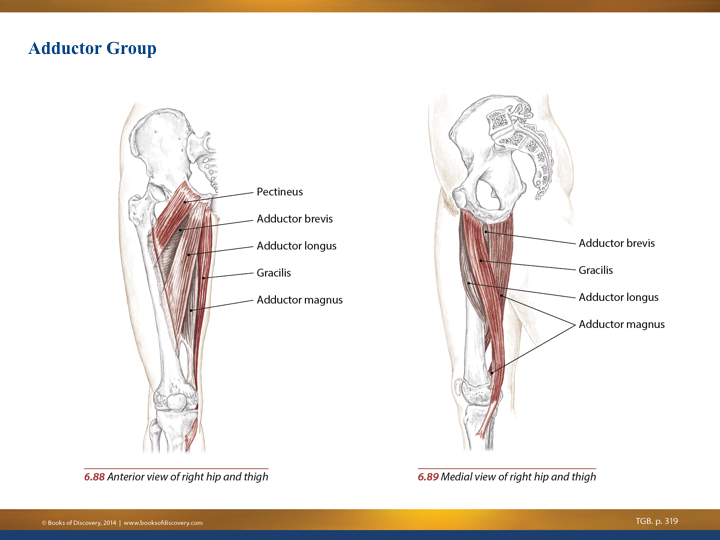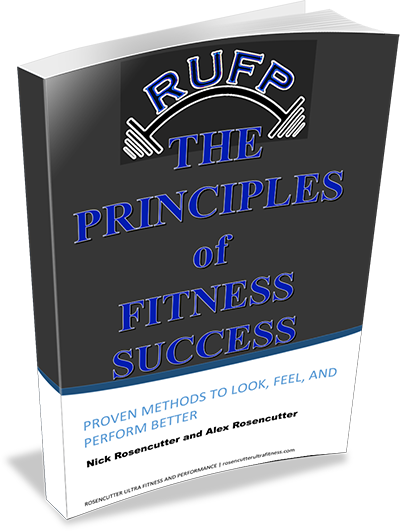
If there is one thing that I’ve seen since coming into the fitness industry over 12 years ago, it’s the growth in the knowledge of the need for more specific glute work with a large number of people out there living today. Poor glute function often leads to an overworked low back and/or aggravated knees along with less than optimal movement quality. The fact that more and more people are becoming aware of this is great; however, there are other players around the hip and leg that are also very important to take care of, and in my opinion, a specific group of these often gets sad because they are not addressed and not included often enough in the conversation. While strengthening the glute muscles is great to help keep the outer hip solid, people often forget that there is a VERY LARGE section of muscle on the INSIDE of the hip and thigh. Bring on the adductors!
Have you ever felt that thick tendon that shoots down a bit from your pelvis? That’s your adductor tendon and it just so turns out that there are adductor muscles above that tendon called your adductor longus, adductor brevis and pectineus. The floor of your adductors, your adductor magnus, lays below this tendon and is really like a fourth hamstring if you look at it close enough. The gracilis runs along the path of all of these and is sometimes referred to as part of this group of friends. They all attach at various points on your pelvis and run down varying distances along your femur (your thigh bone), with the exception of the gracilis, which runs all the way down past the knee to your lower leg. All of these muscles work together to bring the hip and leg towards the midline of your body, while those higher up adductors help to flex the hip (move it towards your head) and the floor of the adductors (magnus) helps to extend the hip (move it away from your head). In some cases, the magnus can even extend the hip better than the glute. Many of them work together to help rotate the hip. As you can see, these guys cover a lot of ground. That being said, wouldn’t it make sense to do some direct training to strengthen them? In many circles, direct adductor work is often written off since the exercises aren’t “functional.” While the TRUE function of these muscles is to help stabilize the pelvis and control the knee with compound movement, how do we expect them to be able to fully contribute if they are too weak to do so. Furthermore, if the adductors are too weak, how can we expect the glutes to do their job optimally, since these guys work together for so many movements and activities? I think a lot of people are missing a pretty important part of the equation!

If we take it one step farther, many of the adductor exercises that you do see out there don’t always directly target them and involve a host of other muscles contributing to the overall movement, or require some kind of complexity to get the coordination down to actually be able to perform the movement. So, with this article, I’d like to show you A. Exercises that do their best at DIRECTLY targeting the adductors in either an extended hip position or a flexed hip position, B. Exercises that allow you to target them in a straight forward and easy manner and C. Exercises that specifically target the adductors moving the femur (thigh bone) in the acetabulum (hip joint) and an exercise that specifically targets the adductors moving the acetabulum over the femur, which are both necessary functions that should be trained.
While compound, multi joint movements should absolutely be the priority in a good training program, some direct exercises for specific muscles can go a long way in making those compound movements that much more effective. Here are a few of my favorites for bring up those lagging adductors that you might have:
- Supine Bent Knee Band Adduction
- With this exercise, we are training WHILE IN HIP FLEXION. Lay on your back and get your hips and back squared up on the floor. Put the band over one knee and while keeping your pelvis and back solid, move your thigh in towards your midline (adduct) against the band tension, starting from a stretched position with band tension from the beginning. Pause for a second at the midline and then control the movement back out to the beginning. 2 to 3 sets of anywhere from 8 to 20 reps works great here.
- Elevated Adductor Raise
- With this exercise, we are training WHILE IN HIP EXTENSION. Lay on your side with your hips on a bench; place your top foot on another bench lined up straight across from you. With your trunk and hips lined up straight, raise the bottom foot up to the bench under the top foot and pause for a second before lowering back to the floor. These also work great for 2 to 3 sets of 8 to 20 reps. For all of these, it works well to go from 15-20 reps for a couple of weeks down to 8 to 10 for a couple of weeks.
- Sidelying Pullback
- While the first two exercises are great to work the adductors from a neutral position, these are great to train the adductor while in a specific pelvic position (left or right stance). Additionally, the first two examples are training the femur (thigh bone) moving in the acetabulum (hip joint), while this exercise is training the acetabulum to move over the femur prior to moving the femur in the acetabulum. This is how the hips actually work when we do full body movement on our feet. For the purpose of this example, we will be laying on our right side and training the left adductor. Lay on your side with your pelvis and ribs lined up. Be sure that your low back is not extended. Place a pad between your thighs. Inhale as your pull your top knee behind your bottom knee, then exhale as you push the top knee down into the pad. Pull back farther and squeeze down again for the next 2 breaths. Once you can no longer pull back any farther, reset and start over. Note: When you pull back, your back and hips should remain square; it is a “scissoring” motion, not a “rolling back” of the hips. Eventually, you can progress to variations performed in different postural positions, such as on your feet. Thank you to Postural Restoration Institute for this gem.
- Check out this bonus video of an effective way that we like to use the old school “Thigh Master” to target specific adductor fibers.
Give these exercises a shot and build some fresh muscle, potentially decrease your risk of groin pulls and improve the strength and performance of your entire lower body.




